Exploring Guangsheng Temple and Pagoda: A Journey Through History and Spirituality
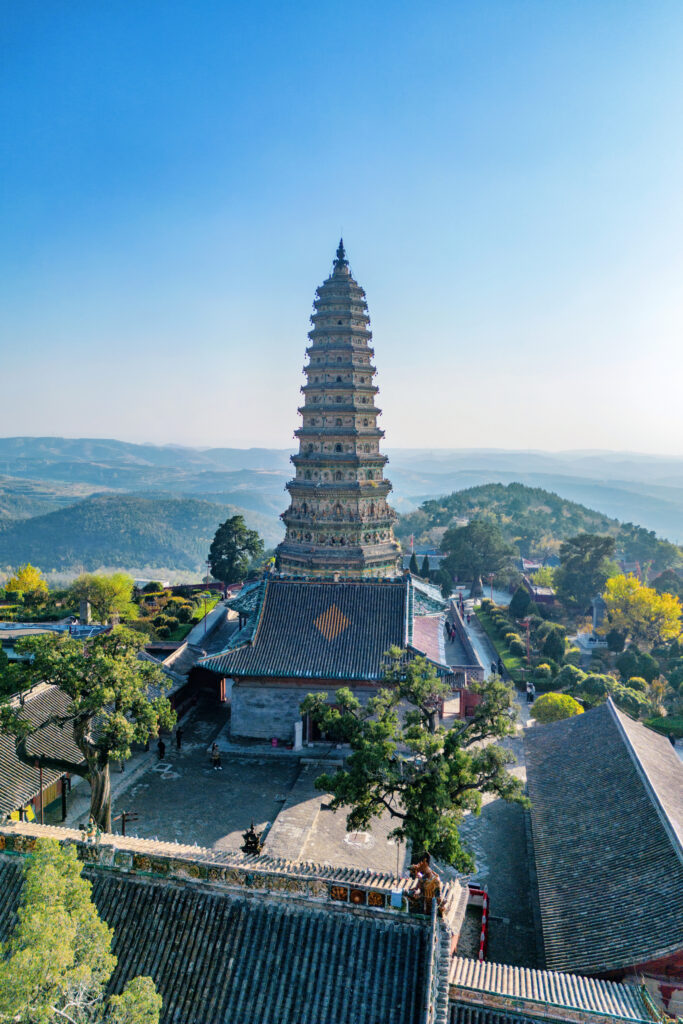
An Essential Guide to Visiting Guangsheng Temple And Pagoda
In This Guide
- An Essential Guide to Visiting Guangsheng Temple And Pagoda
- The Rich History and Legends of Guangsheng Temple And Pagoda
- Main Highlights: What You Absolutely Can’t Miss
- Planning Your Visit: A Practical Guide
- Tickets: Prices, Booking, and Tips
- How to Get There: A Complete Transportation Guide
- Local Cuisine and Accommodation Nearby
- Frequently Asked Questions
- Final Thoughts on Your Trip
Nestled in the serene landscape of Hongdong County in Shanxi Province, Guangsheng Temple and its iconic Feihong Pagoda beckon travelers with a fusion of history, spirituality, and stunning architecture. Established in 147 AD, this magnificent Buddhist temple stands as a testament to ancient engineering and cultural significance, drawing visitors eager to explore its storied past and breathtaking beauty.
As you approach the temple, the octagonal silhouette of the Feihong Pagoda rises majestically against the sky, renowned as the largest and best-preserved glazed pagoda in China. Standing nearly 500 years old, its thirteen stories shimmer in the sunlight, captivating the hearts of those who gaze upon it. The intricate craftsmanship and vibrant colors reflect the artistry of the era, inviting you to delve deeper into the architectural marvels of ancient China.

Guangsheng Temple And Pagoda.
What to Expect at Guangsheng Temple and Pagoda
-
Historical Significance: The temple is not just a place of worship but a monument to the rich tapestry of Chinese history. It may soon join the ranks of UNESCO World Heritage Sites, highlighting its importance.
-
Architectural Wonders: The Feihong Pagoda, with its unique octagonal design and vibrant glazed tiles, showcases the pinnacle of ancient Chinese architecture. Visitors can explore the temple grounds and admire various other structures, each with its own story and significance.
-
Tranquil Environment: Set against the backdrop of Huoshan Mountain, the temple offers a peaceful retreat from the hustle and bustle of modern life. The serene atmosphere is perfect for reflection and appreciation of the surrounding natural beauty.
-
Accessibility: While access to the temple may involve a short hike, there are options for transportation to bring you closer to the entrance, ensuring that visitors of all ages can partake in this cultural experience.
-
Nearby Attractions: Enhance your visit by exploring other nearby historical sites, such as Xia Temple and Yuhuang Temple, allowing for a fuller understanding of the region’s rich heritage.
Visiting Guangsheng Temple and Pagoda is more than just a sightseeing excursion; it’s an opportunity to connect with the history and culture of China in a setting that feels both timeless and spiritually uplifting. Whether you are a history buff, a cultural enthusiast, or simply seeking a moment of tranquility, this hidden gem in Shanxi Province is sure to leave a lasting impression.
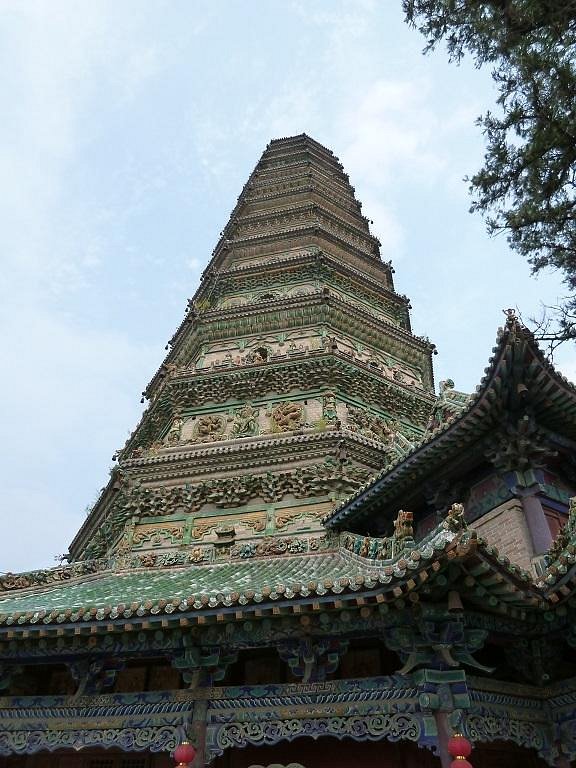
Guangsheng Temple And Pagoda.
The Rich History and Legends of Guangsheng Temple And Pagoda
Nestled at the foot of Huoshan Mountain in Hongdong County, Guangsheng Temple and its magnificent Feihong Pagoda stand as a testament to the rich tapestry of Chinese history and Buddhist culture. Established in the year 147 AD, this temple has become a cherished landmark, attracting travelers keen to explore its storied past and architectural splendor.
A Glimpse into History
The Origins of Guangsheng Temple
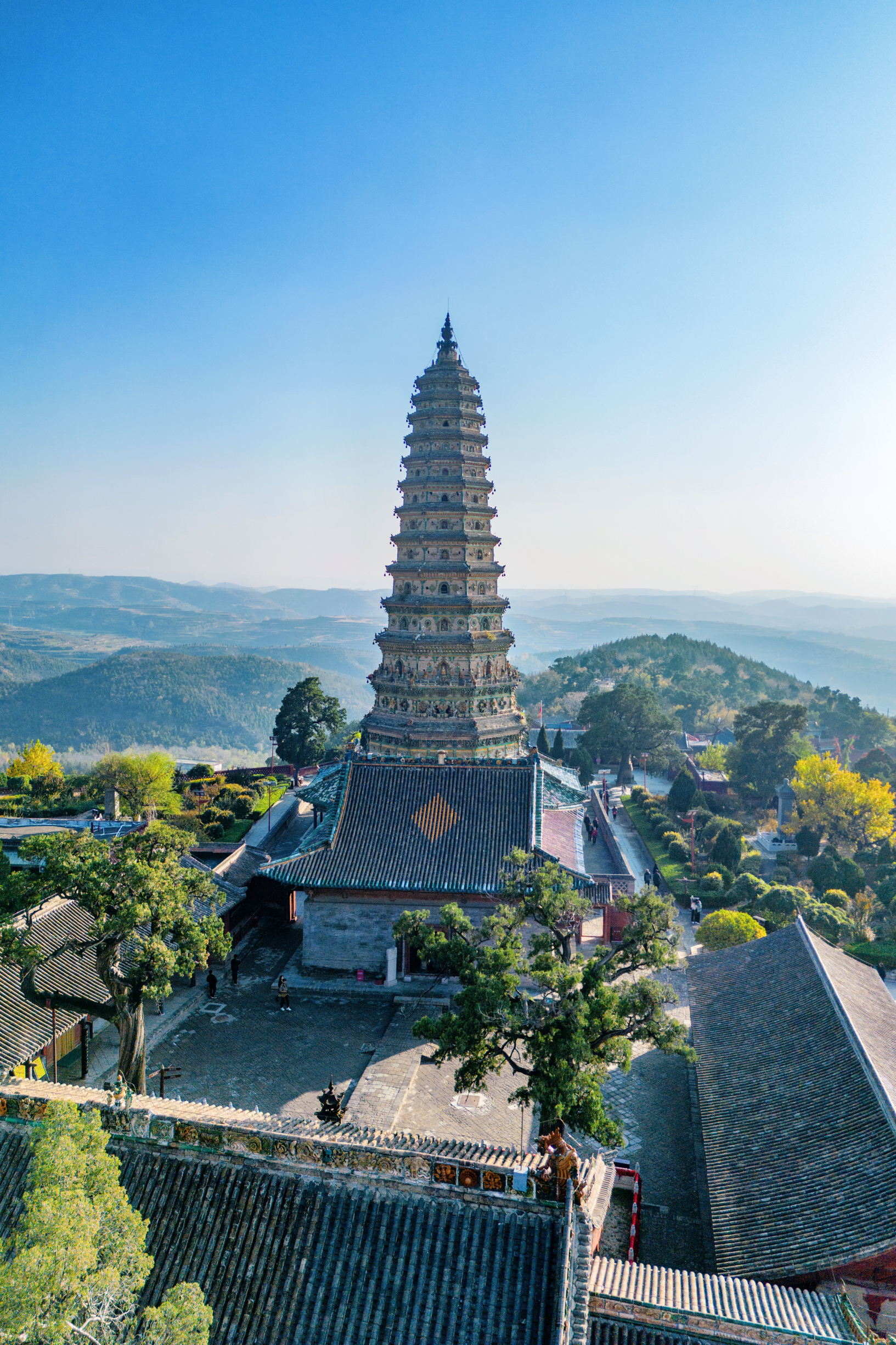
Guangsheng Temple And Pagoda.
The Guangsheng Temple, with its origins tracing back to the Eastern Han Dynasty, embodies the enduring spirit of Buddhism in China. Built during a period when Buddhism began to flourish in the region, the temple served as a spiritual sanctuary and a hub for religious activities. Its historical significance is amplified by its continued preservation, allowing visitors to step back in time and appreciate the artistry and devotion of those who built and maintained it.
Feihong Pagoda: A Masterpiece of Architecture
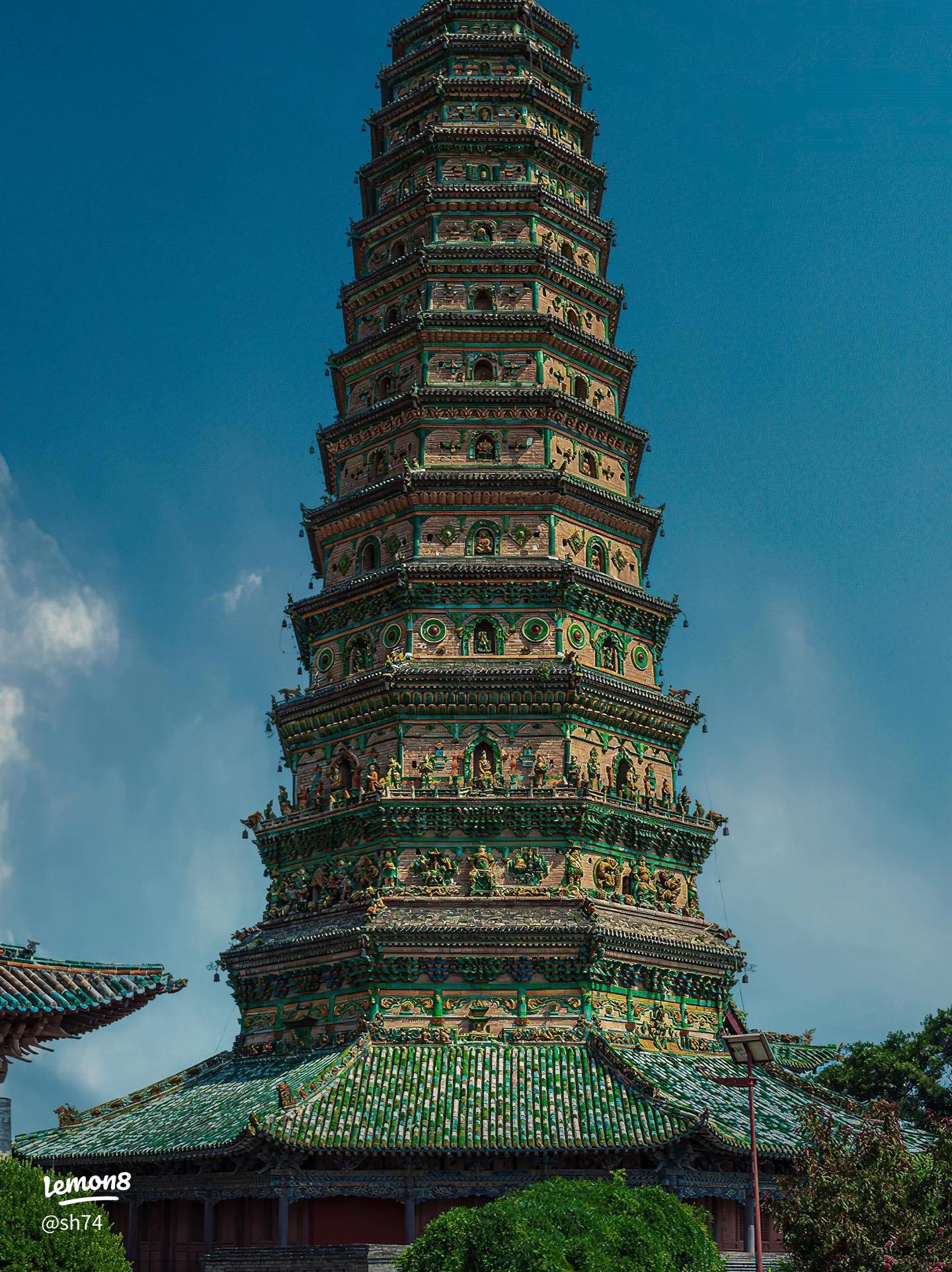
Guangsheng Temple And Pagoda.
The crowning glory of Guangsheng Temple is undoubtedly the Feihong Pagoda, recognized as the largest and best-preserved glazed pagoda in China. This octagonal, 13-storey structure rises gracefully against the skyline, glimmering under the sun with its vibrant glazed tiles. Constructed nearly 500 years ago, the pagoda showcases the exquisite craftsmanship of the Ming dynasty and stands as a symbol of Buddhist reverence. The intricate designs and the harmonious proportions of the pagoda reflect the architectural advancements of the time, making it not only an aesthetic marvel but also a significant cultural relic.
Legends and Folklore
The Tale of the Flying Rainbow
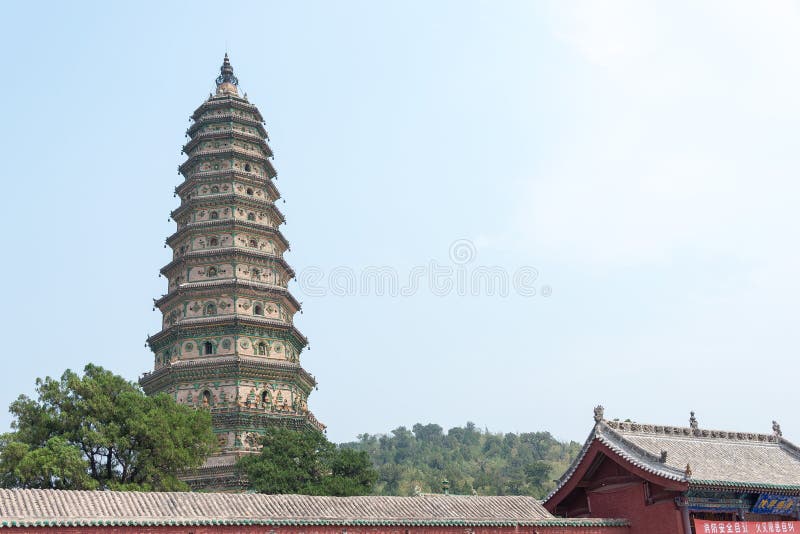
Guangsheng Temple And Pagoda.
One of the most enchanting legends associated with Feihong Pagoda is the story of the “Flying Rainbow.” Local lore suggests that on certain days, when the sun shines just right, the pagoda emits a radiant spectrum of colors that dance across the sky, reminiscent of a rainbow. This phenomenon has been interpreted as a divine blessing, believed to signify the presence of enlightened beings watching over the temple. Visitors often flock to the pagoda during these moments, hoping to witness the ethereal display and capture the magic of this ancient site.
Guardians of the Pagoda
Another captivating legend speaks of the guardians of the pagoda—mythical creatures said to protect the temple from intruders and misfortune. Local stories describe how, in times of strife, these guardians would manifest as fierce protectors, ensuring the safety of the temple and its devotees. This folklore not only adds a layer of mystique to the site but also reflects the deep-rooted belief in spiritual protection, which is integral to Buddhist culture.

Guangsheng Temple And Pagoda.
Cultural Significance
Guangsheng Temple and Feihong Pagoda are not only architectural wonders but also vital cultural artifacts that encapsulate the essence of Shanxi’s Buddhist heritage. As a potential UNESCO World Heritage Site, the temple complex is recognized for its significant role in the spread of Buddhism across China. The pagoda, with its unique structure and historical resonance, has become a focal point for scholars and tourists alike, eager to learn about its architectural significance and the spiritual narratives that surround it.
Conclusion
Visiting Guangsheng Temple and Feihong Pagoda is more than just an exploration of a historical site; it is an invitation to connect with centuries of tradition, legends, and the enduring spirit of Buddhism. As you wander through the temple grounds, take a moment to reflect on the stories etched in its walls and the serene beauty that continues to inspire visitors from around the globe. Whether you are a history enthusiast, a lover of architecture, or simply seeking a peaceful retreat, Guangsheng Temple offers a rich experience steeped in history and spirituality.

Guangsheng Temple And Pagoda.
Main Highlights: What You Absolutely Can’t Miss
When exploring Guangsheng Temple and its remarkable Feihong Pagoda, visitors are treated to a rich tapestry of history, architecture, and culture that encapsulates the essence of Chinese Buddhism. Here are the main highlights that you absolutely cannot miss during your visit:
1. Feihong Pagoda: A Glimmering Marvel
The crown jewel of Guangsheng Temple is undoubtedly the Feihong Pagoda, also known as the Flying Rainbow Pagoda. Standing tall at 13 stories, this octagonal, glazed brick structure, erected in 147 AD, is the largest and best-preserved glazed pagoda in China. Its vibrant colors shimmer in the sunlight, making it a breathtaking sight. Climbing to the lower levels offers a glimpse into the intricate architectural details, including beautiful carvings and niches housing Buddhist figures.
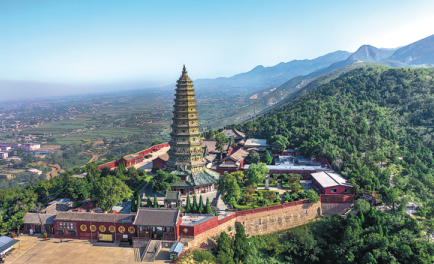
Guangsheng Temple And Pagoda.
2. Architectural Splendor
As you wander through the temple grounds, take a moment to admire the traditional Buddhist architecture of Guangsheng Temple itself. The temple features beautifully preserved halls and pavilions, each adorned with intricate woodwork and vibrant murals. These elements offer an authentic insight into the architectural styles prevalent during the Ming Dynasty, making it a significant cultural site.
3. Tranquil Atmosphere
Nestled at the foot of Huoshan Mountain, Guangsheng Temple provides a serene environment perfect for contemplation. The gentle sound of nature, combined with the historical ambiance of the temple, creates a peaceful oasis away from the hustle and bustle of modern life. It’s a great place to sit, meditate, or simply enjoy the tranquil surroundings.

Guangsheng Temple And Pagoda.
4. Historical Significance
Dating back nearly 500 years, Guangsheng Temple is not just a religious site but also a testament to the region’s rich Buddhist heritage. It has witnessed centuries of history and has become a vital part of the local culture. The temple’s potential designation as a UNESCO World Heritage Site underscores its historical importance, making a visit here an opportunity to connect with China’s deep historical roots.
5. Scenic Surroundings
The temple is located in Hongdong County, an area rich in natural beauty. After exploring the temple, consider taking a short hike in the surrounding hills, which offer stunning views of the landscape and the ancient architecture below. The nearby Taiyue Mountain and Daling River Wetland Park are also worth exploring for those seeking a deeper connection with nature.
6. Cultural Insights
Engage with the local culture by participating in any ceremonies or events taking place at the temple. Visitors often have the chance to observe or partake in traditional Buddhist rituals, offering a unique experience that enhances understanding of Chinese spirituality and customs.
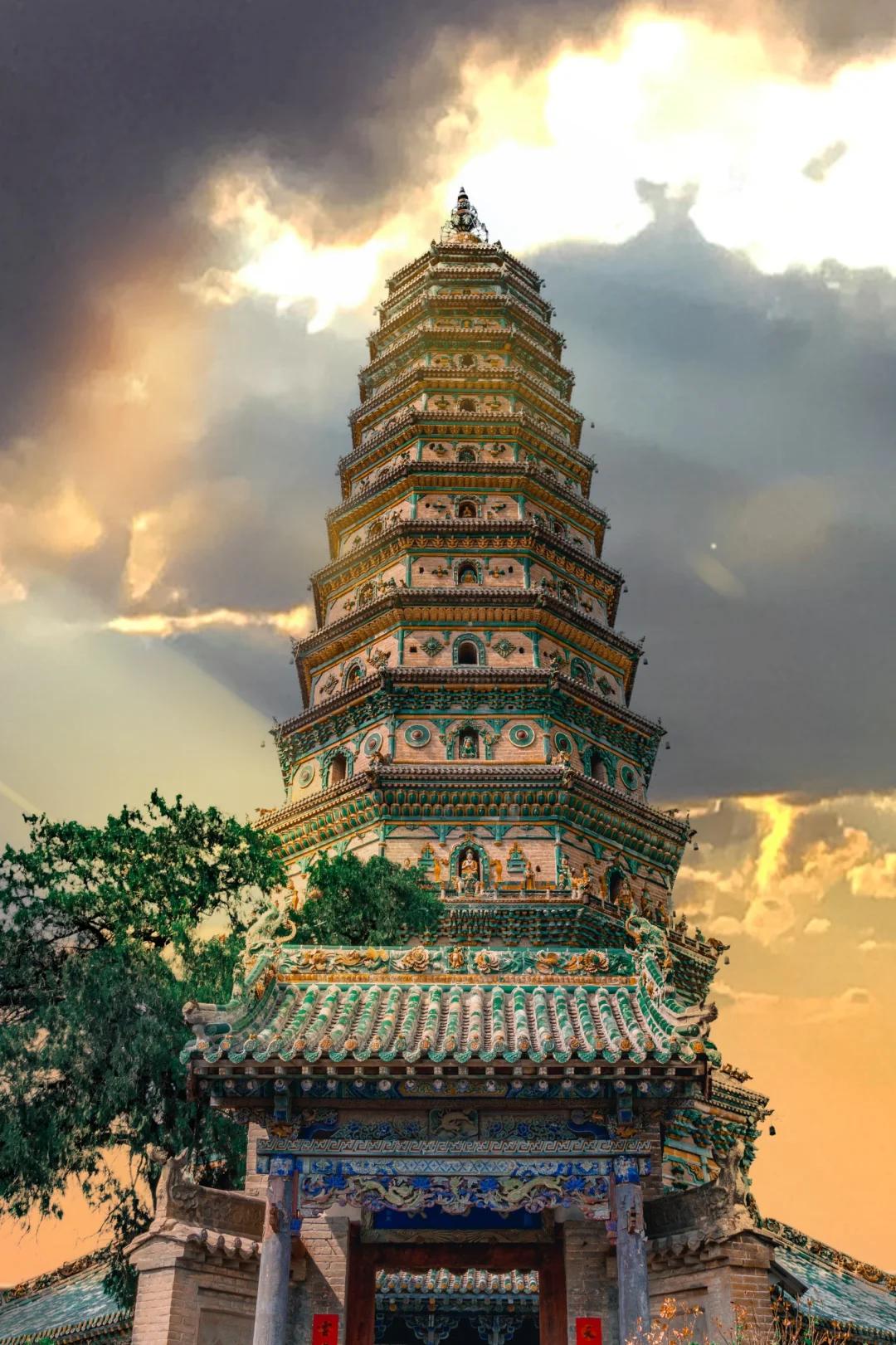
Guangsheng Temple And Pagoda.
7. Accessibility and Visitor Experience
Guangsheng Temple is open daily from 7:00 AM to 7:00 PM, allowing visitors ample time to explore. While the approach may require a short hike, the journey is rewarding. For convenience, small vehicles can transport visitors closer to the temple entrance, making it accessible for those with mobility concerns.
8. Nearby Attractions
Don’t miss out on other nearby historical sites, such as the Xia Temple and Feihong Tower, which are just a short distance away. These locations complement the experience at Guangsheng Temple and provide further insights into the region’s rich cultural landscape.
In summary, a visit to Guangsheng Temple and its magnificent Feihong Pagoda is an enriching experience that combines stunning architecture, deep historical significance, and a peaceful atmosphere. It’s a must-see for anyone looking to delve into the heart of Chinese history and culture.
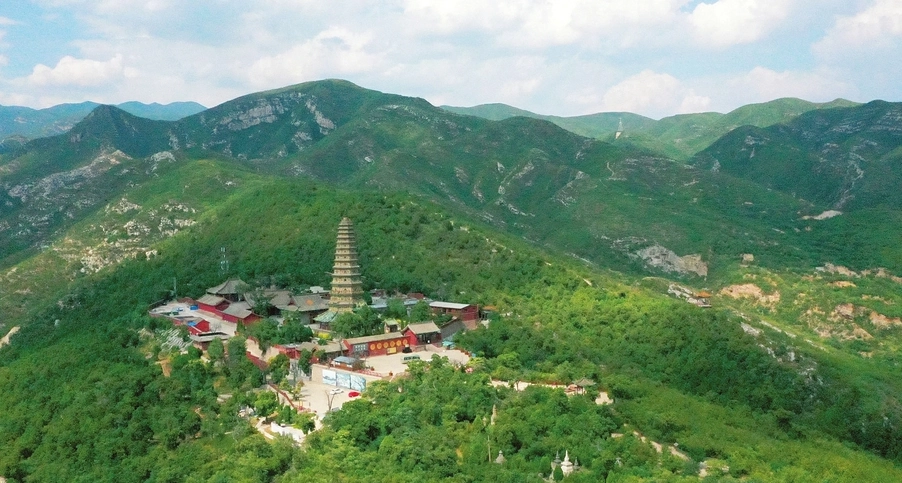
Guangsheng Temple And Pagoda.
Planning Your Visit: A Practical Guide
Getting Ready for Your Visit to Guangsheng Temple and Pagoda
Nestled at the foot of Huoshan Mountain in Hongdong County, Guangsheng Temple (广胜寺) and its crowning jewel, the Feihong Pagoda (琉璃塔), offer a captivating glimpse into China’s rich cultural and architectural heritage. If you’re planning a trip to this historical site, here’s everything you need to know to make the most of your experience.
Best Time to Visit
Guangsheng Temple is open year-round, with visiting hours from 7:00 AM to 7:00 PM daily. However, the best time to visit is during the spring and autumn months (April to June and September to November). During these seasons, the weather is mild, making your exploration of the temple grounds and the surrounding area more enjoyable.
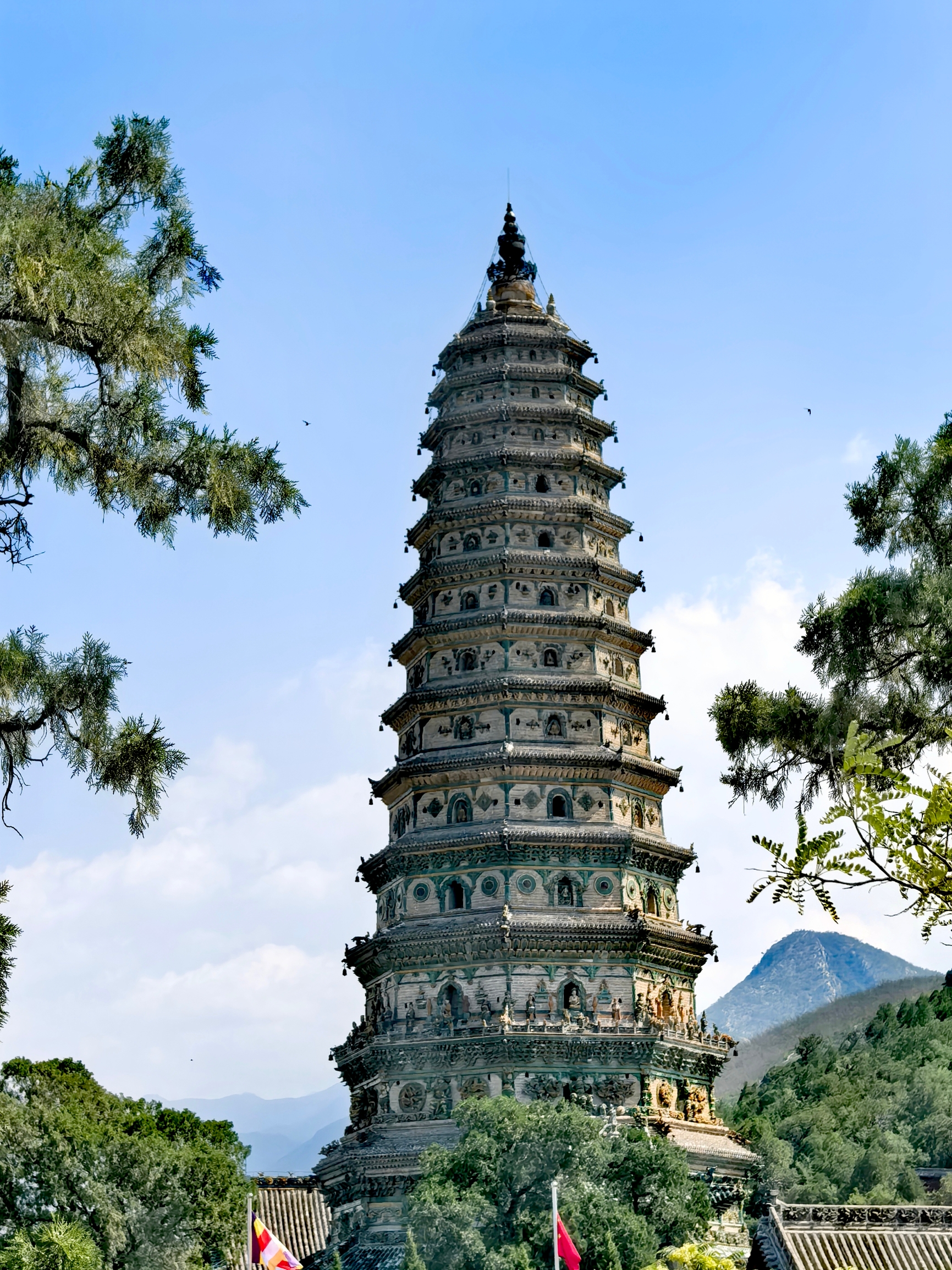
Guangsheng Temple And Pagoda.
How to Get There
-
By Air: The closest major airport is Linfen Qiaoli Airport (LFQ), approximately 30 kilometers away. From the airport, you can hire a taxi or take a shuttle bus to reach Hongdong County.
-
By Train: Linfen Railway Station offers train services from major cities. Once you arrive, local transportation options, such as buses or taxis, can take you to the temple.
-
By Road: If you’re driving, follow the signs to Huoshan Mountain in Hongdong County. The temple is accessible via a well-maintained road.
Entrance Fee
While the temple is a hidden gem and may not be heavily commercialized, it’s wise to check for any entrance fees upon arrival. Typically, access to the temple grounds is affordable, often around 10 to 20 yuan, making it accessible for all travelers.
What to Expect
Guangsheng Temple boasts a myriad of historical features:
-
Feihong Pagoda: This stunning 13-storey octagonal structure is the largest and best-preserved glazed pagoda in China. As you gaze upon it, especially on sunny days, the pagoda sparkles like a jewel. Climbing to the top allows you to soak in panoramic views of the surrounding countryside.
-
Temple Complex: In addition to the pagoda, the temple complex includes various halls, statues, and serene gardens where you can reflect and appreciate the spiritual ambiance.
-
Cultural Significance: The temple is not just an architectural wonder but a site of significant cultural heritage, potentially on the path to becoming a UNESCO World Heritage Site.
Tips for Your Visit
-
Wear Comfortable Shoes: The temple complex may involve some walking and moderate hiking, especially if you opt for a more adventurous approach to reach the site.
-
Bring Water and Snacks: While there may be local vendors nearby, it’s always a good idea to carry water and a light snack, especially if you plan to explore the nearby trails or spend a lot of time at the temple.
-
Respect the Local Customs: As a place of worship, it’s important to be respectful. Dress modestly and observe any posted guidelines regarding photography and behavior within the temple grounds.
-
Avoid Peak Times: To enjoy a more tranquil experience, consider visiting during the weekdays or in the early morning hours when crowds are minimal.
Nearby Attractions
While in Hongdong County, take the opportunity to explore other nearby attractions:
- Xia Temple: A short distance from Guangsheng, this temple features impressive architectural designs and rich history.
- Feihong Tower: Known for its unique structures and scenic views, it’s another must-visit landmark.
- Taiyue Mountain: Ideal for hiking enthusiasts, this mountain offers breathtaking views and a chance to connect with nature.
Conclusion
A visit to Guangsheng Temple and Pagoda is not just a journey through stunning architecture; it’s a step back in time to experience the spiritual and historical richness of ancient China. With thoughtful planning, you can immerse yourself in the beauty and culture that this remarkable site has to offer. Enjoy your adventure!
Tickets: Prices, Booking, and Tips
When planning your visit to Guangsheng Temple and the stunning Feihong Pagoda, it’s essential to have the latest details on ticket prices, booking options, and some helpful tips to enhance your experience.
Ticket Prices
- Standard Admission: The entry fee for Guangsheng Temple is typically 10 yuan (approximately $1.50 USD). This ticket grants you access to the temple itself, where you can admire its historical architecture and serene atmosphere.
- Combined Tickets: If you’re looking to explore more, consider purchasing a combined ticket that includes access to nearby attractions, such as the Fengguo Temple. This option often offers a better value, especially for avid explorers.
Booking Options
- On-Site Purchase: Tickets can be purchased directly at the entrance of Guangsheng Temple. It’s advisable to arrive early in the day to avoid crowds, as the site is less frequented, especially during weekdays.
- Online Reservations: While not always necessary, some travelers prefer booking tickets in advance through local travel platforms. This can save you time and ensure a smooth entry, particularly during peak tourist seasons.
Tips for Your Visit
- Timing Your Visit: Guangsheng Temple is open daily from 7:00 AM to 7:00 PM. Visiting during the early morning or late afternoon can provide a quieter experience and beautiful lighting for photography, especially with the Feihong Pagoda glimmering in the sun.
- Accessibility: The temple is located at the foot of Huoshan Mountain, and while the hike up can be invigorating, there are options for those who prefer a less strenuous route. Small vehicles may be available for hire to take you closer to the temple if needed.
- Explore Beyond the Temple: Don’t miss the chance to explore nearby attractions, such as Xia Temple and Taiyue Mountain, to enrich your understanding of the area’s cultural heritage.
- Photography Tips: The intricate details of the pagoda and temple offer fantastic photography opportunities. Bring a camera to capture the exquisite carvings and the serene surrounding landscape.
By keeping these details in mind, your visit to Guangsheng Temple and its iconic pagoda will be both memorable and enriching, allowing you to immerse yourself in the rich tapestry of Chinese history and culture.
How to Get There: A Complete Transportation Guide
Getting to Guangsheng Temple and Pagoda
Visiting Guangsheng Temple and its magnificent Feihong Pagoda is an enriching experience for travelers keen on exploring China’s rich history and culture. Nestled in Hongdong County, Shanxi Province, this historical site is well worth the journey. Here’s how you can get there seamlessly.
By Air
The nearest major airport to Guangsheng Temple is Linfen Qiaoli Airport (LFQ), approximately 30 kilometers away. This airport has connections to major cities in China, including Beijing and Xi’an. From the airport, you can take a taxi or pre-arranged transfer to reach the temple.
For international travelers, Beijing Capital International Airport (PEK) or Beijing Daxing International Airport (PKX) are further options. From Beijing, you can travel to Linfen by train or bus.
By Train
The train system in China is extensive and efficient. You can take a high-speed train from Beijing or Xi’an to Linfen. The journey from Beijing typically takes around 4 to 5 hours, while from Xi’an, it’s about 2 to 3 hours.
Once you arrive at Linfen Railway Station, you have a couple of options:
- Taxi: The quickest way to get to Guangsheng Temple is by taxi, which will take approximately 45 minutes.
- Bus: Alternatively, you can opt for a local bus that connects to Hongdong County. Buses frequently run from the station, but be prepared for a longer journey.
By Bus
If you prefer to travel by bus, there are long-distance buses that operate from major cities such as Beijing, Xi’an, and Taiyuan to Hongdong County. The bus ride from Beijing can take about 12 hours, while from Taiyuan, it’s roughly 3 to 4 hours. Upon arriving in Hongdong, you can take a taxi or a local minibus to the temple, which is situated at the foot of Huoshan Mountain.
Local Transportation
Once you’re in Hongdong County, getting to the temple is straightforward:
- Taxi Services: Taxis are readily available and can take you directly to Guangsheng Temple. The fare is quite reasonable, and it’s the most convenient option.
- Walking: If you’re up for a little exercise, the temple is accessible by a scenic walk from the town center, taking about 15-20 minutes. This allows you to enjoy the local sights along the way.
Tips for Your Journey
- Language: While many young people in China speak some English, knowing a few basic Chinese phrases can be very helpful, especially in rural areas.
- Travel Off-Peak: To avoid crowds, consider visiting during weekdays or outside of major holidays.
- Check the Weather: The best time to visit is during spring (April to June) and autumn (September to October) when the weather is pleasant for exploring.
With these transportation options and tips, your journey to Guangsheng Temple and the stunning Feihong Pagoda will be both enjoyable and enriching. Immerse yourself in the historical beauty and cultural significance of this incredible site!
Local Cuisine and Accommodation Nearby
Exploring the cultural richness surrounding Guangsheng Temple and Pagoda not only immerses visitors in the serenity of its ancient architecture but also offers a taste of Shanxi’s delectable local cuisine. Here are some recommendations for dining and accommodation nearby that will enhance your journey through this historic region.
Local Delicacies to Savor
While visiting Guangsheng Temple, indulging in the local flavors of Shanxi Province is a must. Here are a few dishes to seek out:
-
Shanxi Noodles (刀削面, Daoxiao Mian): Often regarded as the province’s culinary gem, these hand-sliced noodles are served with various toppings like meat, vegetables, and rich sauces. Be sure to try them in a local eatery for an authentic taste.
-
Pingyao Beef (平遥牛肉, Pingyao Niurou): This tender, flavorful beef is a specialty of the nearby ancient city of Pingyao. It’s usually marinated with spices and served with a side of pickled vegetables.
-
Vinegar from Shanxi (山西醋, Shanxi Cu): Known for its unique aroma and flavor, this vinegar is a hallmark of the region’s cuisine. Use it to add a distinct taste to your dishes or enjoy it in local salads.
-
Steamed Buns (包子, Baozi): These fluffy buns are often filled with pork, vegetables, or sweet bean paste. They make for a perfect snack while exploring the temple grounds.
Dining Options Nearby
-
Huoshan Restaurant (火山餐厅)
Located a short drive from Guangsheng Temple, this restaurant offers a variety of local dishes, including the famous Shanxi noodles and Pingyao beef. The ambiance is cozy and inviting, making it a great place to unwind after a day of sightseeing. -
Temple View Eatery (寺景小吃)
This quaint eatery features a menu filled with traditional snacks and dishes. It’s particularly known for its dumplings and handmade noodles. The friendly staff will ensure you feel at home. -
Ancient Town Café (古镇咖啡馆)
For a more laid-back vibe, this café serves light meals, teas, and local desserts. It’s an excellent spot to relax and enjoy a cup of tea while soaking in the views of the surrounding landscapes.
Comfortable Lodging
To enjoy a restful night after your explorations, consider these accommodation options near Guangsheng Temple:
-
Huoshan Mountain Resort (火山山庄)
Nestled at the foot of Huoshan Mountain, this resort offers comfortable rooms with stunning views. The on-site restaurant serves delicious local cuisine, and the serene environment is perfect for relaxation. -
Yizhou Inn (义州客栈)
This charming inn combines traditional architecture with modern amenities. Guests can enjoy spacious rooms and easy access to local attractions, making it an ideal base for your adventures. -
Hongdong Hotel (洪洞大酒店)
A bit further away, this hotel provides a blend of comfort and convenience. It features well-appointed rooms, a fitness center, and an on-site restaurant that serves both local and international dishes.
Each of these dining and lodging options will enhance your visit to Guangsheng Temple, allowing you to fully immerse yourself in the rich culture and history of Shanxi Province. Enjoy your culinary adventures and comfortable stays as you explore this historic gem!
Frequently Asked Questions
Frequently Asked Questions about Guangsheng Temple and Pagoda
1. What is the historical significance of Guangsheng Temple?
Guangsheng Temple, built in A.D. 147, is a significant Buddhist temple located in Hongdong County, Shanxi Province. It is renowned for its historical architecture, particularly the Feihong Pagoda, which is considered the largest and best-preserved glazed pagoda in China. The temple is a testament to the rich Buddhist heritage and architectural ingenuity of the region.
2. What can visitors expect to see at Guangsheng Temple?
Visitors will be greeted by a stunning temple complex featuring the octagonal Feihong Pagoda, which has 13 stories and glimmers beautifully on sunny days. The temple grounds also include various traditional Buddhist structures and intricate carvings that reflect the artistic styles of ancient China. It is a place where history, culture, and spirituality converge.
3. Are there any entrance fees or tickets required?
Yes, there is typically a small entrance fee to access Guangsheng Temple and its grounds. It is advisable to check for the current rates before your visit, as prices may vary or special combined tickets might be available for nearby attractions.
4. What are the visiting hours for Guangsheng Temple?
The temple is open daily from 7:00 AM to 7:00 PM. It’s best to visit during daylight hours to fully appreciate the beauty of the architecture and the surrounding landscape.
5. How do I get to Guangsheng Temple?
Guangsheng Temple is accessible by various means of transportation. If you are traveling by car, there are parking facilities available. For those using public transport, local buses or taxis can take you to the nearby area, followed by a short hike to the temple. Be prepared for a little uphill walk, which can be quite refreshing.
6. Is Guangsheng Temple suitable for families and children?
Absolutely! Guangsheng Temple is a family-friendly destination. The serene environment and scenic beauty provide a great opportunity for children to learn about Chinese culture and history. However, parents should ensure that younger children are supervised during the hike and in the temple grounds.
7. Can I take photographs inside the temple?
Yes, photography is generally allowed in the temple grounds, but it’s advisable to be respectful of the sacred spaces and the worshippers. Some areas may have restrictions, so look for signage or ask staff if you’re unsure.
8. What other attractions are nearby?
In addition to Guangsheng Temple, visitors can explore several nearby attractions, including Xia Temple and Yuhuang Temple, both offering unique insights into the region’s architectural heritage and religious history. The stunning Taiyue Mountain is also a short distance away, perfect for nature lovers and those looking to enjoy a hike.
Final Thoughts on Your Trip
As your journey at Guangsheng Temple and Feihong Pagoda draws to a close, it’s essential to reflect on the unique experiences this ancient site has bestowed upon you. This remarkable temple, with its roots dating back to 147 AD, is not merely a destination but a gateway into the rich tapestry of Chinese history and culture.
A Journey Through Time
Exploring the Feihong Pagoda, the largest and best-preserved glazed pagoda in China, is akin to stepping into a living museum. Standing at 13 stories high and gleaming under the sun, this octagonal structure invites admiration and curiosity. It serves as a testament to the architectural ingenuity of the past and the enduring legacy of Buddhist culture in the region.
Cultural Significance
Guangsheng Temple is more than just its stunning architecture; it embodies the spiritual and artistic traditions that have flourished in Shanxi Province for centuries. The intricate carvings and serene atmosphere offer a moment of contemplation amidst the hustle of modern life. As you walk through the temple grounds, take a moment to absorb the tranquil surroundings, allowing the whispers of history to envelop you.
Practical Tips for Future Visitors
- Timing Your Visit: Aim to arrive early or late in the day to enjoy the site with fewer crowds, enhancing your experience.
- Accessibility: Be prepared for a short hike to reach the temple, but the journey is well worth it for the breathtaking views and historical insights that await you.
- Nearby Attractions: Consider extending your visit to explore nearby historical sites like Xia Temple and Feihong Tower, which further enrich the cultural narrative of your trip.
In Closing
Your visit to Guangsheng Temple and Feihong Pagoda is not just about witnessing a piece of history; it’s about connecting with the spirit of a culture that has shaped the landscape of China. As you leave, carry with you the stories and the serenity of this sacred site, allowing them to inspire your journey ahead. Whether you are a history buff, a culture enthusiast, or simply a traveler in search of beauty, Guangsheng Temple offers a profound experience that lingers long after you’ve departed. Safe travels, and may your exploration of China continue to unveil its many wonders!